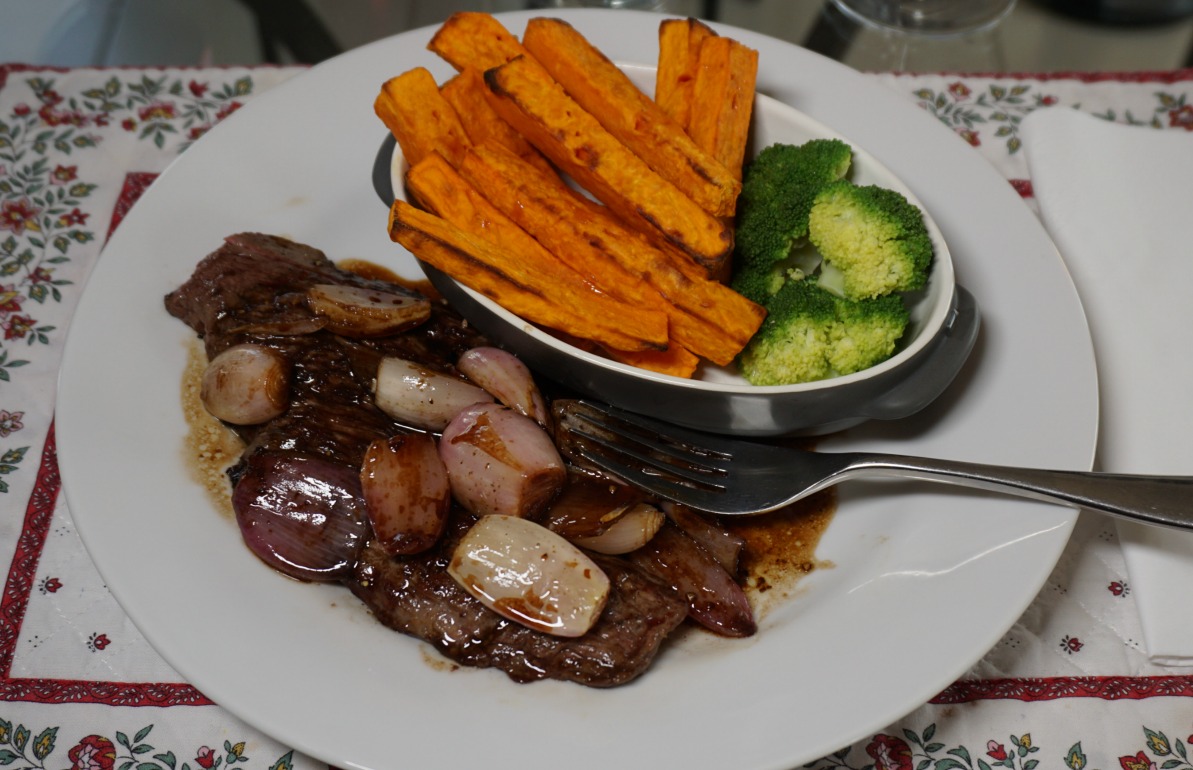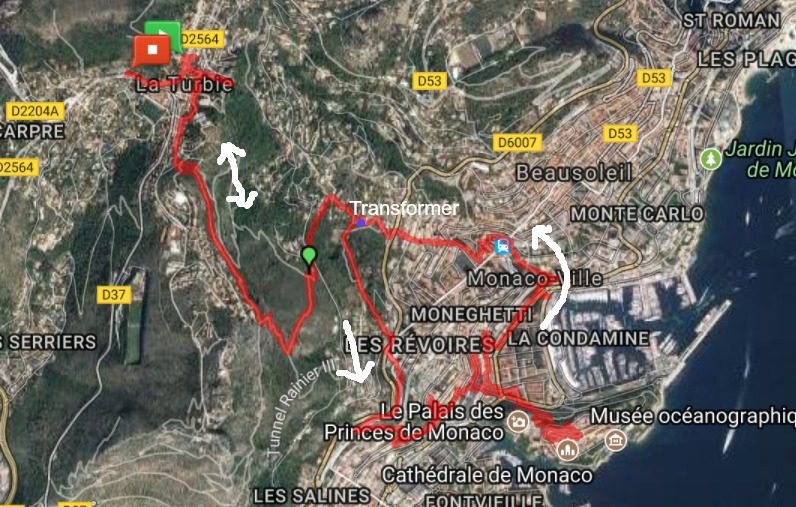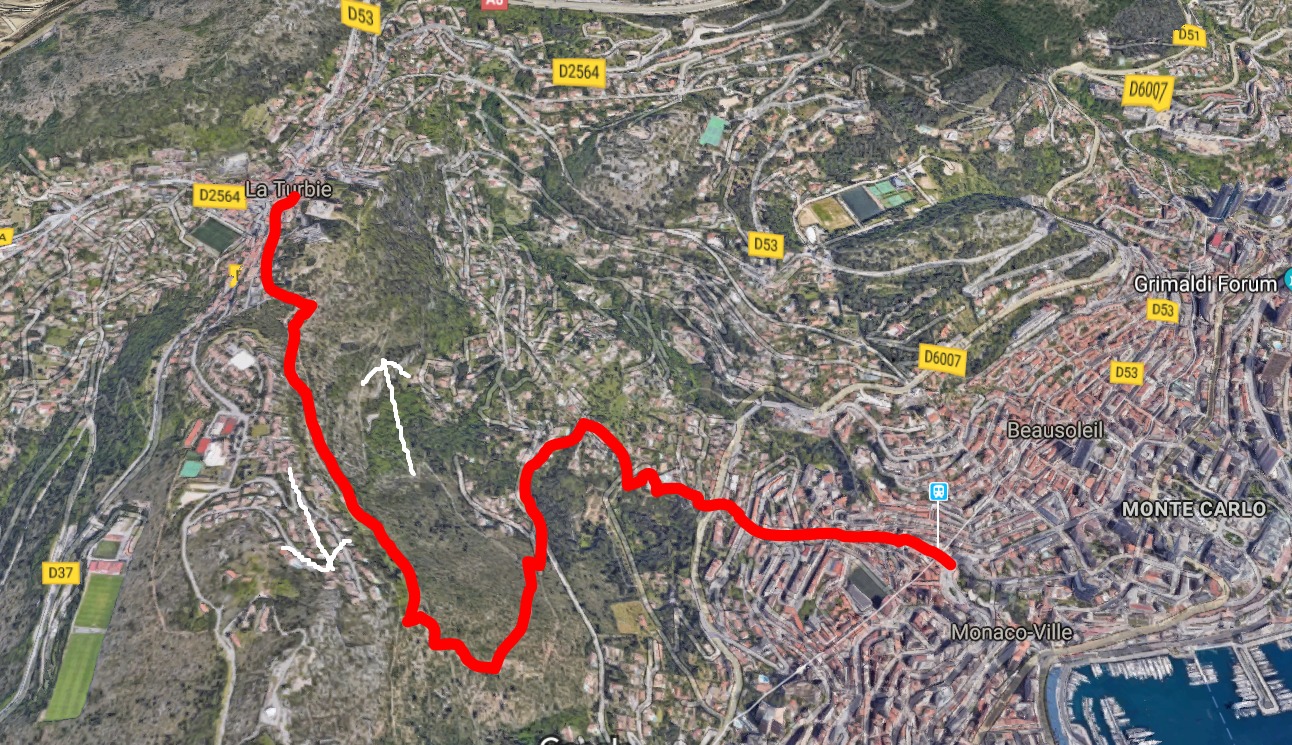Flank steak with shallots

Bavette à l’ échalote, flank or skirt steak with shallots, is a classic French bistro recipe. La bavette is cut into thin slices, which usually are very tender.
The traditional sauce is made from butter, oil, shallots and red wine or red wine vinegar. The steak is served in the sauce with fries or sautéed potatoes and sometimes a green salad on the side.
I followed the suggestion in the cookery booklet from our supermarket in Nice and made the sauce from good Italian balsamic vinegar, which gave a rich, intense taste. I served the steak with sweet potato fries and steamed broccoli for more colour and antioxidants. And the main course was followed by salad and some cheese in the classic French way.
If you cannot find bavette in your country, you can make this dish with any thin and tender beef steak.
2 servings
2 bavettes or other thin steaks
2 sweet potatoes
About 6 florets of broccoli
8 medium shallots
2 medium sweet potatoes
4 tbsp. olive oil
1 tbsp. butter
50 ml good Italian balsamic vinegar
Freshly ground black pepper
A pinch of salt (optional)
For the sweet potato fries:
Start preparing the fries. Preheat the oven to 200° C. Peel the sweet potatoes and cut into even about 1 cm x 1 cm strips. Pour 1 tbsp. olive oil in a plastic bag, add the sweet potatoes and shake.
Place the strips into one layer on a baking tray lined with baking paper. Bake in the oven for about 30 minutes until slightly crisp.
For the shallot sauce:
Peel the shallots and cut into halves. In a frying pan, warm 2 tbsp. olive oil over medium heat and sauté the shallots for about 10 minutes. Add the balsamic vinegar and continue cooking for 10 more minutes until the sauce has reduced somewhat. Grind over black pepper.
For the steaks:
Heat 1 tbsp. butter and 1 tbsp. oil in a grill pan over high heat. Fry the steaks on both sides to your liking, then transfer to the pan with shallot sauce. Grind over some black pepper.
For the broccoli:
Wash the broccoli florets. Microwave with a little water for a few minutes until soft.
Divide the steaks and sauce on the plates. Serve the fries and broccoli on the side.


































0 comments:
Note: only a member of this blog may post a comment.